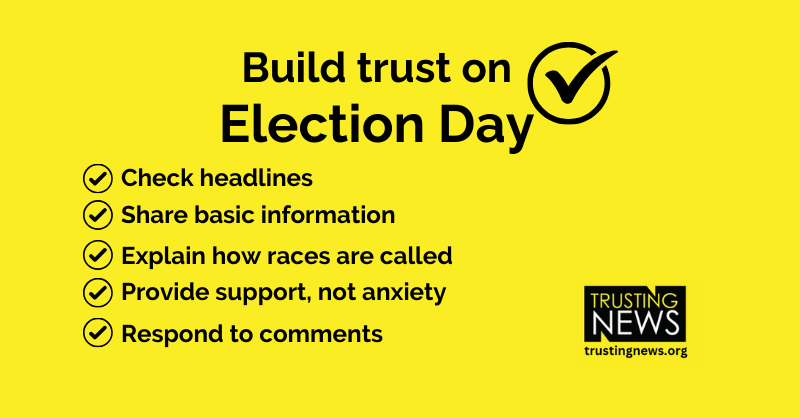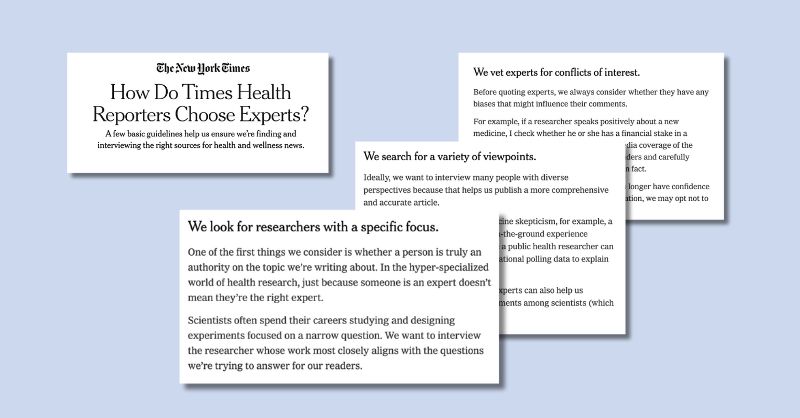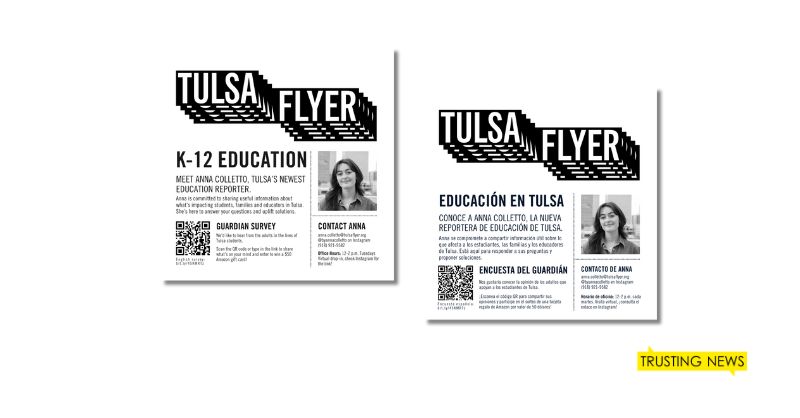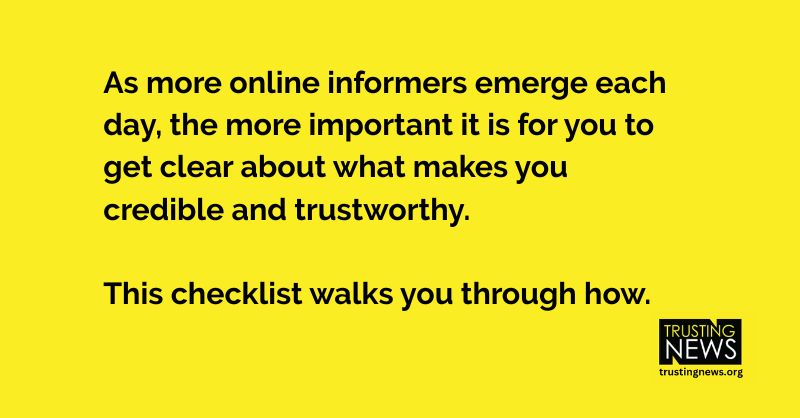
Many people will be paying extra attention to the news next Tuesday. It’s important that as journalists, we’re focused on being relentlessly useful for our audiences and showcasing what makes our news credible and accurate. Today we’re sharing quick things you can do to demonstrate credibility on Election Day. (We mean it when we say […]
Use this checklist to build trust on Election Day
Many people will be paying extra attention to the news next Tuesday.
It’s important that as journalists, we’re focused on being relentlessly useful for our audiences and showcasing what makes our news credible and accurate.
Today we’re sharing quick things you can do to demonstrate credibility on Election Day. (We mean it when we say quick — we know you don’t have extra time!)

1. Check headlines
Watch for unnecessarily polarizing and inflammatory headlines. Is a race “heated” or is it close? Are two candidates “battling” or running against each other? Is an even-handed story being undermined by a headline that makes specific stakeholders feel disrespected or misrepresented? News consumers have said that simple word choices and framings in headlines turn people off from the news and can send signals that news is biased.
Our headline checklist and word choice guide have tips about specific words and framing that can feel polarizing.
2. Explain how races are called
Normalize that vote counting takes time and that we may not have results on election night. Explain that hiccups with polling places and voting machines are normal. Talk about how races are called.
We compiled some pre-written explainers you can copy and share on how vote counting and other processes work. Election SOS also created a story template for newsrooms to adapt and use to help set expectations around when to expect election results.
3. Respond to comments and misinformation
If people are confused and have questions, or are doubting the fairness and accuracy of your election coverage — and of election results and processes — we as journalists need to be ready to respond.
If you struggle to know which comments to respond to, or how to not have a defensive tone in your response, check out the comment section in this Election Trust Kit.
We are also offering real-time support to help newsrooms and journalists combat misinformation and address comments by helping you draft comment responses, and decide which comments are worth responding to. Find more information about on that here (and at the bottom of today’s newsletter).
4. Make basic information easy to find
Keep in mind that many people are just now tuning in to the election. Don’t assume people have contextual knowledge about candidates and races.
Instead, make basic information — like voter guides that explain who is running, basic information about what’s on the ballot, and basic how-to voter information — super accessible and easy for people to find on your website and other platforms. Pay special attention to SEO, as many people will be googling to find this type of information.
5. Provide support, not anxiety
Our priority is to help our communities have access to credible news. If we’re bombarding them by being alarmist or inundating them with alerts, it’s likely many people will get overwhelmed and tune us out. This is a time for offering straightforward facts, not raising provocative questions in headlines to get clicks.
Focus on sharing important information in a calm, helpful context. That means being cautious not to overuse breaking news alerts or sharing too many updates that might feel more overwhelming than helpful. (Lynn wrote more about that in last week’s newsletter).
We’ll help you respond to election questions and accusations
Our team at Trusting News is offering real-time support to help newsrooms respond to public perceptions and misassumptions about your election coverage and voting processes.
Bring us whatever is showing up in your comments, inboxes and community conversations, and we’ll help you:
- Draft sample responses you can use
- Prioritize engagement efforts and make suggestions about what’s worthy of a response
We’re offering this support as part of the Election Urgent Care Slack, from the Knight Election Hub and Votebeat. In that Slack workspace, you can get rapid support on topics like election law, election administration, online threats and data gathering. Find details and request access to that support here.
You can also request support directly through Trusting News by emailing info@TrustingNews.org.At Project C, Liz Kelly Nelson helps media companies, newsrooms and journalists consider the evolution of our field and how we can ensure equitable access to news and information for all. Subscribe to the Project C newsletter for more information and to keep up with the latest news about creator journalism.
At Trusting News, we learn how people decide what news to trust and turn that knowledge into actionable strategies for journalists. We train and empower journalists to take responsibility for demonstrating credibility and actively earning trust through transparency and engagement. Learn more about our work, vision and team. Subscribe to our Trust Tips newsletter. Follow us on Twitter and LinkedIn.

Project manager Mollie Muchna (she/her) has spent the last 10 years working in audience and engagement journalism in local newsrooms across the Southwest. She lives in Tucson, Arizona, where she is also an adjunct professor at the University of Arizona’s School of Journalism. She can be reached at mollie@trustingnews.org and on Twitter @molliemuchna.



